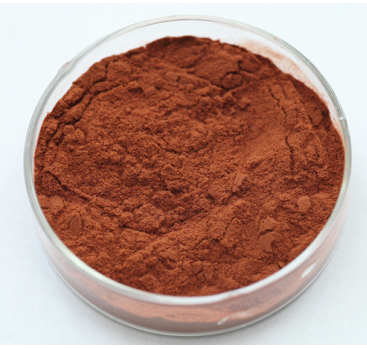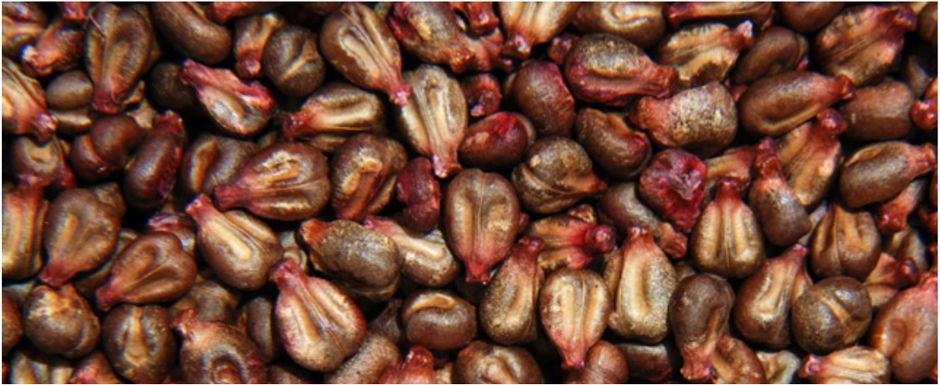Special Price for Grape seed extract Manufacturer in Iceland
Special Price for Grape seed extract Manufacturer in Iceland Detail:
[Latin Name] Vitis vinifera Linn
[Plant Source] Grape seed from Europe
[Specifications] 95%OPCs;45-90% polyphenols
[Appearance] Red brown powder
[Plant Part Used]: seed
[Particle size] 80 Mesh
[Loss on drying] ≤5.0%
[Heavy Metal] ≤10PPM
[Pesticide residue] EC396-2005, USP 34, EP 8.0, FDA
[Storage] Store in cool & dry area, keep away from the direct light and heat.
[Shelf life] 24 Months
[Package] Packed in paper-drums and two plastic-bags inside.
[Gerneral feature]
- Our product has passed the ID test by ChromaDex, Alkemist Lab. and other
third-party authoritative testing institutions, such as detection;
2. The pesticide residues match (EC) No 396/2005 USP34, EP8.0, FDA and other foreign pharmacopoeia standards and regulations;
3. The heavy metals in strict accordance with the foreign pharmacopoeia standard controls, such as USP34, EP8.0, FDA, etc.;
4. Our company set up a branch and import raw materials directly from Europe with strict control of heavy metal and pesticide residue. Aslo ensure the procyanidins content in grape seed is more than 8.0%.
5. OPCs over 95%, polyphenol over 70%, high activity, the oxidation resistance is strong, the ORAC more than 11000.
[Function]
Grapes (Vitis vinifera) have been heralded for their medicinal and nutritional value for thousands of years. Egyptians ate grapes a very long time back, and several ancient Greek philosophers spoke about the healing power of grapes — usually in the form of wine. European folk healers made an ointment from the sap of grapevines to treat skin and eye diseases. Grape leaves were used to stop bleeding, inflammation, and pain, such as the kind brought on by hemorrhoids. Unripe grapes were used to treat sore throats, and dried grapes (raisins) were used for constipation and thirst. Round, ripe, sweet grapes were used to treat a range of health problems including cancer, cholera, smallpox, nausea, eye infections, and skin, kidney, and liver diseases.
Grape seed extracts are industrial derivatives from whole grape seeds that have a great concentration of vitamin E, flavonoids, linoleic acid and phenolic OPCs. The typical commercial opportunity of extracting grape seed constituents has been for chemicals known as polyphenols having antioxidant activity in vitro.
Product detail pictures:

Related Product Guide:
With our rich experience and considerate services, we have been recognized as a reliable supplier for many international buyers for Special Price for Grape seed extract Manufacturer in Iceland , The product will supply to all over the world, such as: Niger, Manila, Czech Republic, To make every client satisfied with us and achieve win-win success, we will continue to try our best to serve and satisfy you! Sincerely looking forward to cooperating with more overseas customers based on mutual benefits and great future business. Thank you.
Best Health Tips In Urdu For Every Men and Women Jesa Ke Ap Sab Log Jante Hain Tandrusti Hazar Naimat Hai Agar Insan Ki Sehat Achi Ho To Us Ki Zindagi Boht Khubsurat Guzarti Hai Agr Ap In 20 Health Tips Par Amal Karte Hain To Aik Achi Health Bana Sakte Hain
Gynostemma, also called jiaogulan, is a green leafy herb that became famous as a legendary infused “immortality tea” among certain isolated highland villages populations of southern China. This is a location where the plant naturally grows wild and where people were reported to live healthy long lives from daily consumption. Because of its remote use, it has only just recently been introduced into the Chinese herbal system and is now a popular hot tea to drink throughout Asia for its energizing and anti-fatigue effects, often used as a replacement for coffee and caffeinated teas. Containing saponin gypenosides and other constituents that exhibit antioxidant, anti-inflammatory and immune modulating properties, it is often compared to that of ginseng for its unique qualities.
Majestic Herbs, Organic Gynostemma Leaf – https://amzn.to/2esKPyz
Aum Tea Company, Organic Jiaogulan Leaf – https://amzn.to/2ey6Mu2
Mountain Rose Herbs, Organic Gynostemma, 4oz-1lb – https://bit.ly/2ebzW2m
Dragon Herbs Gynostemma, 100caps – https://bit.ly/2ebAPYW
Gynostemma Powdered Extract, 90caps – https://bit.ly/1gccfQu
Ron Teeguarden’s Spring Dragon Longevity Tea – https://bit.ly/1gccoUd
Dragon Herbs Spring Dragon Drops – 2fl oz – https://bit.ly/1l8XCRb
Jing Herbs, Gynostemma Powdered Extract – 90caps – https://bit.ly/1gccfQu
Plum Dragon Herbs, Gynostemma (Jiao Gu Lan), 1oz-1lb – https://bit.ly/2ejlY2a
Gynostemma Tea Benefits Page: https://bit.ly/18WX8vj
Additional Sourced Info:
Botany and Cultivation – Chapter IV, from Jiaogulan “China’s Immortality Herb” by Michael Blumert: https://bit.ly/2ejeo7Y
Histochemical localization of ginsenosides in Gynostemma pentaphyllum and the content changes of total gypenosides: https://bit.ly/2eFfoO7
Immunomodulatory action of the total saponin of Gynostemma pentaphylla: https://bit.ly/2eFeAIT
Mechanistic study of the anti-cancer effect of Gynostemma pentaphyllum saponins: https://bit.ly/2esAX84
A new dammarane-type saponin from Gynostemma pentaphyllum induces apoptosis in A549 human lung carcinoma cells: https://bit.ly/2eFED3Y
Anticancer and immunoregulatory activity of Gynostemma pentaphyllum polysaccharides: https://www.ncbi.nlm.nih.gov/pubmed/24832985
Anti-cancer effects of Gynostemma pentaphyllum: https://bit.ly/2eWKrqn
Purification, characterization and neuroprotective effects of a polysaccharide from Gynostemma pentaphyllum: https://bit.ly/2f3Ovrp
Effects of Polysaccharides from Gynostemma Pentaphyllum on Physical Fatigue: https://bit.ly/2eFfKnV
Antidepressant-like effects of standardized gypenosides: involvement of brain-derived neurotrophic factor signaling in hippocampus: https://bit.ly/2ey3QO8
Protective effects of Gynostemma pentaphyllum polysaccharides: https://bit.ly/2ev5ijm
Gypenosides attenuate the development of L-DOPA-induced dyskinesia: https://bit.ly/2dyPx9y
Metabonomics Study of the Therapeutic Mechanism of Gynostemma pentaphyllum: https://bit.ly/2ey4Cec
Gypenoside XLIX, a naturally occurring gynosaponin, PPAR-alpha dependently inhibits LPS-induced tissue factor expression: https://bit.ly/2evsNdR
Antiobesity effect of Gynostemma pentaphyllum extract (actiponin): a randomized, double-blind, placebo-controlled trial: https://www.ncbi.nlm.nih.gov/pubmed/23804546
Evaluation of Antidiabetic Effects of the Traditional Medicinal Plant Gynostemma pentaphyllum and the Possible Mechanisms of Insulin Release: https://bit.ly/2eFDjhy
Gynostemma pentaphyllum Tea Improves Insulin Sensitivity in Type 2 Diabetic Patients: https://bit.ly/2eTZMvf
All information is for educational purposes only and is the personal view of the author; not intended as medical advice,
diagnosis or prescription. This information has not been evaluated by the FDA and is not intended to cure or prevent any disease.
Adhering to the business principle of mutual benefits, we have a happy and successful transaction, we think we will be the best business partner.







